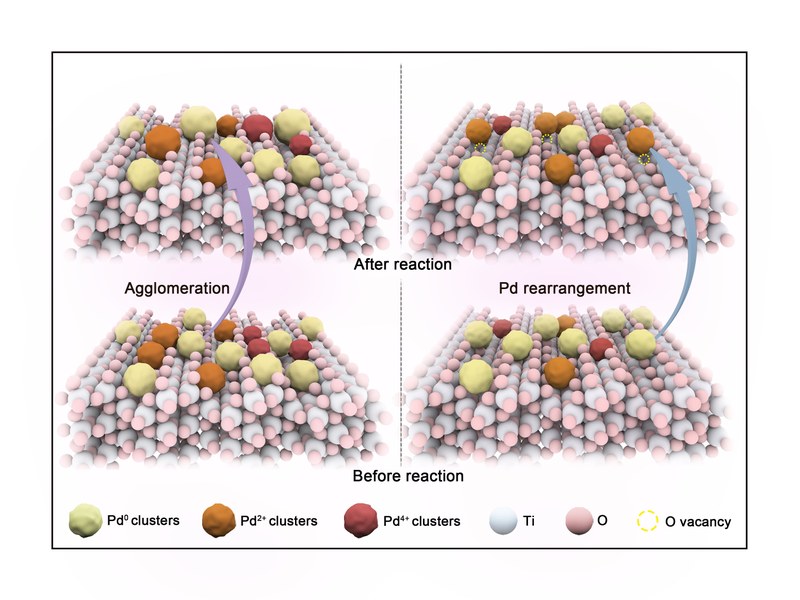Exploration of synthetic routes to achieve stable clusters as cocatalysts
Jun 02, 2022
A collaboration between the groups of Daniel Crespo from the Department of Physics and Jordi Llorca and Lluís Soler from the Department of Chemical Engineering has studied new routes to obtain catalysts from dispersed Pd clusters onto TiO2.
Supported metal clusters are considered as promising cocatalysts in heterogeneous photocatalysis due to their singular geometric structures and unique reactivity. Nevertheless, to explore efficient synthetic routes that result in stable supported clusters with tailored active sites is an urgent yet challenging task. A photocatalyst with highly dispersed Pd clusters onto TiO2 was synthesized through only one-step and low-energy ball milling procedure from TiO2
The particles and palladium acetate salt, without employing any organic ligand to stabilize the active sites.The researchers investigated the relevant synthesis parameters and characterized the produced photocatalysts by several microscopic and spectroscopic techniques, including synchrotron measurements, in order to unravel the origin of this enhanced photoactivity and to properly correlate the surface properties of palladium clusters/nanoparticles on TiO2 with photocatalytic activity, which is at the forefront of photocatalysis studies today. They have demonstrated, for the first time, that the particular ultrasmall architecture accomplished by the mechanochemical method results in an efficient charge separation, low charge transfer resistance and high photocurrent response. This represents an attractive approach to design highly active metal-semiconductor photocatalysts, which can be further explored for a myriad of photocatalytic applications.
A special interaction effect was created between Pd clusters and titania support in Pd/TiO2-BM photocatalysts during the photocatalytic process under UV illumination. Importantly, this particular metal-oxide interface played a crucial role in Pd stabilization for the further photocatalytic reaction, resulting in an outstanding activity over longer testing times.
The mechanochemical strategy may open up new perspectives for manufacturing stable metal clusters supported over oxides as enhanced catalysts without employing any organic ligand to stabilize the active sites. Therefore, mechanochemical methods appear as feasible candidates to substitute conventional synthesis procedures that involve the usage of chemical stabilizers in the synthesis of catalytic supported clusters.
For more information please see the original publication:

Share: